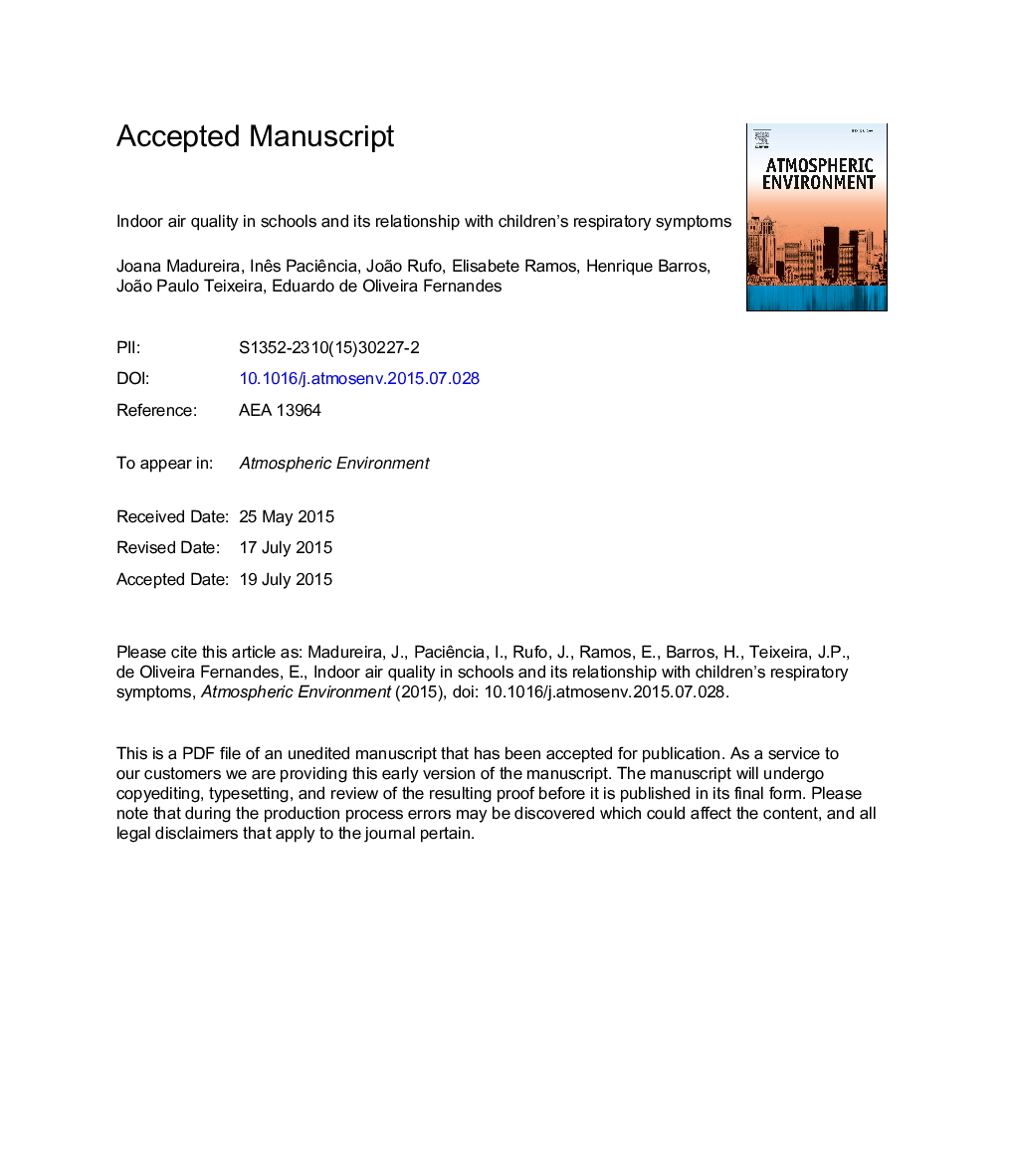| Article ID | Journal | Published Year | Pages | File Type |
|---|---|---|---|---|
| 6337579 | Atmospheric Environment | 2015 | 39 Pages |
Abstract
The results indicated that no classrooms presented individual VOC pollutant concentrations higher than the WHO IAQ guidelines or by INDEX recommendations; while PM2.5, PM10 and bacteria levels exceeded the WHO air quality guidelines or national limit values. High levels of total VOC, acetaldehyde, PM2.5 and PM10 were associated with higher odds of wheezing in children. Thus, indoor air pollutants, some even at low exposure levels, were related with the development of respiratory symptoms. The results pointed out that it is crucial to take into account the unique characteristics of the public primary schools, to develop appropriate control strategies in order to reduce the exposure to indoor air pollutants and, therefore, to minimize the adverse health effects.
Related Topics
Physical Sciences and Engineering
Earth and Planetary Sciences
Atmospheric Science
Authors
Joana Madureira, Inês Paciência, João Rufo, Elisabete Ramos, Henrique Barros, João Paulo Teixeira, Eduardo de Oliveira Fernandes,
